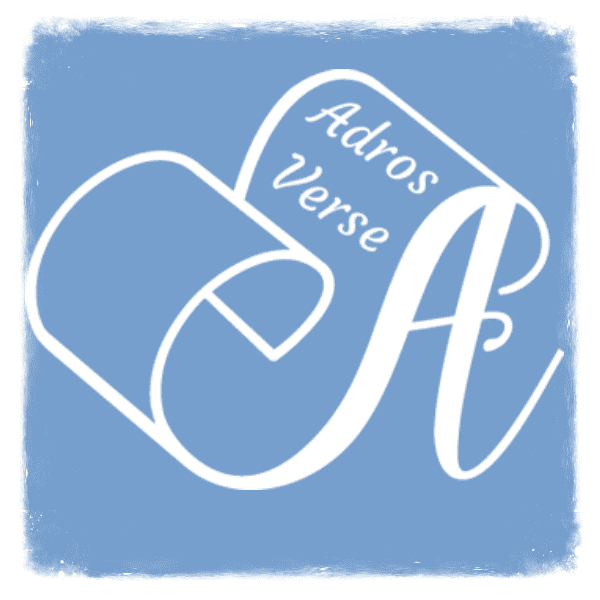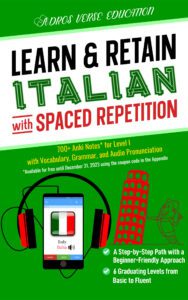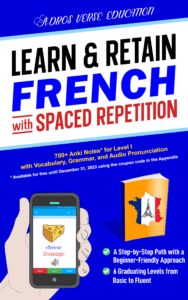In this lesson, we cover the past tense in Arabic, also known as the perfect tense, which corresponds to the English past or present perfect tense.
Table of Contents
- Tenses in Arabic
- Basic Triliteral Abstract Past Verbs
- Derived Triliteral Past Verb Patterns
- Quadri-literal Past Verbs
- Use of قَــدْ (qad) and لَــقَــدْ (laqad) before Past Verbs
- Level III – Intermediate I (B1)
Tenses in Arabic
In terms of moods and verbal tenses, Arabic can be seen as simpler than many Indo-European languages, including English. In general, Arabic grammarians divide tenses into only two main categories:
- الـزَّمَـن الـمـاضـي (az-zaman al-māḍī) ‘the past tense,’ which corresponds to the English past or present perfect tense.
- الـزَّمَـن الـمُـضـارِع (az-zaman al-muḍāri‘) ‘the present tense,’ which often corresponds to the English present or present continuous tense.
Note that in some Arabic grammar books for English learners, the past tense and present tense are sometimes referred to as the perfect tense and imperfect tense, respectively.
Some verbal tenses found in English do not exist in Arabic. Verbs in Arabic lack an infinitive form. The consonantal root in Arabic is somewhat comparable to the infinitive in Indo-European languages but serves a distinct role. The future tense is derived directly from the present tense, as will be explained in Level IV, Lesson 1.
In this lesson, we will examine الـزَّمَـن الـمـاضـي (az-zaman al-māḍī) ‘the past tense.’ The verb used in the past tense in Arabic is referred to as فِـعْـل مـاضٍ (fi‘l māḍin) ‘past verb.’
Basic Triliteral Abstract Past Verbs
Most verbs in Arabic have tri-consonantal roots, while only a few verbs have quadri-consonantal roots. Let us first examine the three basic forms of the shortest past verbs, that is, verbs constructed from the three radicals of the tri-consonantal root without any prefixes, suffixes, infixes, etc. We call this a basic verb form, or مُـجَـرَّد ثُـلاثـي (mujarrad thulāthī) ‘triliteral abstract.’ The key difference between the three basic verb forms is the short vowel that marks the middle radical.
| (1) | (2) | (3) |
| َََفَـعَـلَ (fa‘ala) | فَـعِـلَ (fa‘ila) | فَـعُـلَ (fa‘ula) |
| Examples | ||
| كَـتَـبَ (kataba) he wrote | فَـــرِحَ (fariḥa) he became happy | كَـبُــرَ (kabura) he/it grew bigger |
| فَـتَـحَ(fataḥa) he opened | شَــرِبَ (shariba) he drank | كَــثُــرَ (kathura) it became more |
Most past verbs follow Form (1), while some follow Form (2), and only a few follow Form (3).
Past-tense verb conjugation in Arabic varies by gender and number. Here, “x” denotes one of the three possible vowels marking the middle radical of the basic forms. To conjugate a verb in the past tense in Arabic, the appropriate attached pronoun (suffix) is added to the stem فَـعـلـ (fa‘xl-).
| Singular | Dual | Plural | |
| 1st person (m/f) | أَنـا فَـعـلْــتُ ’anā fa‘xltu I did | نَـحْـنُ فَـعـلْــنـا naḥnu fa‘xlnā We did | |
| 2nd person masculine | أَنْـتَ فَـعـلْــتَ ’anta fa‘xlta You did | أَنْـتُمـا فَـعـلْــتُــمـا ’antumā fa‘xltumā You (both) did | أَنْـتُـمْ فَـعـلْــتُـمْ ’antum fa‘xltum You (all) did |
| 2nd person feminine | أَنْـتِ فَـعـلْــتِ ’anti fa‘xlti You did | أَنْـتُـنَّ فَـعـلْــتُـنَّ ’antunna fa‘xltunna You (all) did | |
| 3rd person masculine | هُــوَ فَــعــلَ huwa fa‘xla He did | هُــمـا فَـعــلا humā fa‘xlā They (both) did | هُــمْ فَـعـلــوا hum fa‘xlū They did |
| 3rd person feminine | هِــيَ فَـعـلَــتْ hiya fa‘xlat She did | هُــمـا فَـعـلَــتـا humā fa‘xlatā They (both) did | هُــنَّ فَـعـلْــنَ hunna fa‘xlna They did |
The third-person masculine plural form has a silent ا (’alif) at the end of the verb, which is not pronounced, i.e., فَـعـلــوا (fa‘xlū) ‘they did.’
Verbs in the past tense in Arabic are always مَـبْـنِـيّ (mabniyy) ‘grammatically indeclinable,’ meaning their final vowel does not change regardless of the verb’s position in the sentence.
Here are some examples:
| نَـحْـنُ شَـرِبْـــنـا الْـعَـصـيـر٠ naḥnu sharibnā -l-‘aṣīr. We drank the juice. | كَـتَـبْـتُ رِسـالَـةً لِـصَـديـقـي٠ katabtu risālatan li-ṣadīqī. I wrote a letter to my friend. |
| كَـثُـرَت الْـمَـشـاكِـلُ٠ kathurat (i) -l-mashākil. The problems increased. | ذَهَـبــا إِلـى الْـمَـدْرَسَـةِ بـاكِـرًا٠ dhahabā ’ilā -l-madrasati bākiran. They (both) went to school early. |
| الْأَوْلادُ كَـبُـروا بِـسُـرْعَـةٍ٠ al-’awlādu kaburū bi-sur‘ah. The boys grew up quickly. | أَحْـمَـدُ سَـمِـعَ صَـوْتًـا٠ ’aḥmadu sami‘a ṣawtan. Ahmad heard a voice. |
Note that the detached personal pronoun can sometimes be omitted as the verb conjugation ending is sufficient to indicate the subject.
When describing non-human beings—such as animals, plants, objects, or concepts—in the plural, the feminine singular form فَـعـلَــتْ (fa‘xlat) is used. For example:
| كَـثُـرَتِ الْـمَـشـاكِـلُ٠ kathurat (i) -l-mashākil. The problems increased. | شَـرِبَـتِ الْـقِـطَـطُ الْـمـاءَ٠ sharibat (i) -l-qiṭaṭu -l-mā’. The cats drank the water. |
When describing human beings, the verb agrees in both gender and number if the noun precedes the verb; otherwise, the verb remains singular but retains gender agreement. Here are some examples:
| الْأَوْلادُ كَـبُـروا بِـسُـرْعَـةٍ٠ al-’awlādu kaburū bi-sur‘ah. The boys grew up quickly. | كَـبُـرَ الْأَوْلادُ بِـسُـرْعَـةٍ٠ kabura -l-’awlādu bi-sur‘ah. The boys grew up quickly. |
| الْـبَـنـاتُ ذَهَـبْـنَ إِلـى الْـمَـدْرَسَـة٠ al-banātu dhahabna ’ilā -l-madrasah. The girls went to school. | ذَهَـبَـتِ الْـبَـنـاتُ إِلـى الْـمَـدْرَسَـة٠ dhahabat (i) –l-banātu ’ilā -l-madrasah. The girls went to school. |
Thus far, we have focused on verbs that do not contain ا (’alif), و (wāw), or ي (yā’) in their basic forms. Verbs that contain these radicals in their roots will be covered in more detail in Level VI, Lesson 2 on irregular verbs.
Derived Triliteral Past Verb Patterns
In addition to the three basic verb forms, there are derived patterns that build on these forms and add prefixes, suffixes, infixes, or other modifications.
The ten most common past verb patterns in Arabic are:

Note that some of these patterns are used as meaningful words in today’s language, while others are either not used by native speakers or were historically used but are no longer in use.
All these derived patterns adhere to the same verb conjugation rules discussed earlier.
Let us consider some examples:
- Verb patterns derived from the triliteral root ك – ت – ب (k – t – b).

Notice the variety of meanings derived from the same triliteral root. Some patterns, such as (5) and (9), are not found in dictionaries. In real life, Pattern (1) كَـتَـبَ (kataba) ‘he wrote’ is the most commonly used, whereas Patterns (3), (6), (8), and (10) are more likely to appear in formal writing. Other patterns like (2), (4), (5), and (7) are rarely encountered in modern usage except in dictionaries.
Note that these observations apply only to this specific triliteral root. Other triliteral roots may have different usage maps. Some may not even use Pattern (1) in written or spoken language. Only consistent practice can help you recognize commonly used patterns in written and spoken Arabic.
- Verb patterns derived from the triliteral root ش – ر – ب (sh – r – b).

In this example, only Patterns (1) and (5) are commonly used, whereas Patterns (6), (8), (9), and (10) are not found in dictionaries.
- Verb patterns derived from the triliteral root ك – ب – ر (k – b – r).

Most patterns of this triliteral root are used in either informal or formal contexts. Only Patterns (7), (8), and (9) are not found in dictionaries.
Remember that derived patterns follow the same verb conjugation rules discussed earlier. Here are some examples:
| اِسْـتَـكْـبَـروا كَـثـيـرًا عَـلـى أَقْـرانِـهِـمْ٠ istakbarū kathīran ‘alā ‘aqrānihim. They became arrogant with their peers. |
| تَـشَـرَّبَ حُـبَّ الـرِّيـاضَـةِ مُـنْـذُ الـصِّـغَـرِ٠ tasharraba ḥubba -r-riyādatimundhu -ṣ-ṣighar. He took up the love of sport since childhood. |
Quadri-literal Past Verbs
Most verbs in Arabic have tri-consonantal roots, while only a few verbs have quadri-consonantal roots. Let us now examine the shortest past verb pattern for quadri-consonantal root verbs. There is, in fact, only one form, that is, فَـعْـلَـلَ (fa‘lala) (◌a◌◌a◌a). This basic verb form is called الـمُـجَـرَّد الـرُّبـاعـي (al-mujarrad ar-rubā‘ī) ‘the quadri-literal abstract.’
Examples of basic quadri-consonantal root verbs include:
| َََ۟فَـعْـلَـلَ (fa‘lala) | ||
| Examples | ||
| تَـرْجَــمَ (tarjama) he translated | دَبْـلَـجَ (dablaja) he dubbed (e.g., a film) | هَــنْـدَسَ (handasa) he engineered |
| فَـهْـرَسَ (fahrasa) he compiled an index | زَلْــزَلَ (zalzala) he shook violently | سَــلْــسَــلَ (salsala) he linked together |
Some verbs may not have a known meaning in their basic forms, such as ج – و – ه – ر (j – w – h – r), which serves as the root for the nouns جَـوْهَـر (jawhar) ‘essence’ and مُـجَـوْهَـرات (mujawharāt) ‘jewelry.’
In addition to the basic مُـجَـرَّد رُبـاعـي (mujarrad rubā‘ī) ‘quadri-literal abstract’ verb form, the two most common derived quadri-literal root past verb patterns in Arabic are:
| (1) | (2) |
| تَـفَـعْـلَـلَ (tafa‘lala) | اِفْـعَـلَـلَّ (if‘alalla) |
| تَـسَــلْـسَــلَ (tasalsala) it flowed or followed in succession | اِطْـمَـأَنَّ (iṭma’anna) he felt safe or secure |
| تَـدَحْـرَجَ (tadaḥraja) it rolled | اِشْـمَـأَزَّ (ish ma’azza) he felt disgust |
All of these quadri-literal root verbs and their derived patterns follow the same verb conjugation rules discussed earlier.
Here are some examples:
| اِطْـمَـأَنَّــتْ الْاُمُّ على أَبْـنـائـهـا٠ iṭma’annat (i) -l-’ummu ‘alā ’abnā’ihā. The mother felt reassured about her children. |
| تَـسَــلْـسَــلَــت الْأَحْـداثُ بِـسُـرْعَـةٍ٠ tasalsalat (i) -l-’aḥdāthu bi-sur‘ah. The events followed in succession rapidly. |
Use of قَــدْ (qad) and لَــقَــدْ (laqad) before Past Verbs
In formal language, the past verb can be preceded by the particle قَــدْ (qad) or لَــقَــدْ (laqad), which has no direct translation but implies emphasis, certainty, or completion of the action of the verb. Here are examples that illustrate this usage in Arabic:
| لَــقَــدْ كَـثُـرَت الْـمَـشـاكِـلُ٠ laqad kathurat (i) -l-mashākil. The problems increased. | قَــدْ ذَهَـبــا إِلـى الْـمَـدْرَسَـةِ بـاكِـرًا٠ qad dhahabā ’ilā -l-madrasati bākiran. They (both) went to school early. |
Back to: Grammatical Cases of Nouns & Adjectives
Other lessons in Level III:









